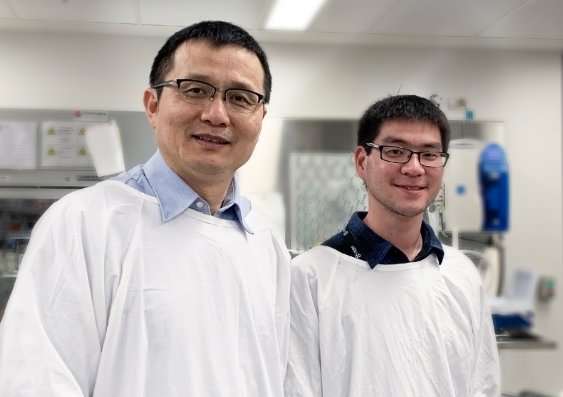Scientists shine light on protein linked to fat storage

In new research that may have implications for strategies fighting obesity and diabetes, UNSW scientists have uncovered the structure of a protein believed to regulate the formation of fat in cells, as well as the formation of fat tissue in animals including humans.
In a study that brought together scientists from UNSW, Tsingshua University, Princeton University and Hebei Medical University (China), the researchers were able to examine the structure of the membrane protein seipin with the use of an electron microscope.
Seipin is integral to the endoplasmic-reticulum in mammalian cells and the researchers believe they discovered a critical function of this protein: to interact with lipids directly.
But more research is needed to find whether the new understanding of the seipin protein can be used to tackle the obesity and diabetes epidemics.
"We resolved the structure of part of the seipin that will provide a much better understanding of the function of the protein," UNSW scientist Professor H Robert Yang said.
"We have made a breakthrough, but we don't know about therapeutic applications yet."
Professor Yang said the seipin protein is nonetheless of great curiosity because of its role in regulating fat storage.
"Without this protein, you can't form fat. This protein is very interesting in medical terms and basic biology terms. But until now, it has been very hard to study and work with because it is membrane bound," he said.
Professor Yang said prior to this latest research, very little was known about this protein.
"But now we have the structure, and from that we can see that seipin looks like a lipid-binding protein. The structure resembles some known proteins that bind to, and possibly transfer, a certain type of phospholipids within the cell," he said.
So would removing this protein be beneficial to reducing fat? Professor Yang cautions against such a strategy.
"Without this protein, this particularly shaped phospholipid will accumulate and that is the reason we have all these problems with fat formation," he says.
"The protein is required for fat formation – if you don't have this protein then there will be no fat tissue, and toxic lipids will diffuse around the cell and body, and cause damage."
But there does remain hope that a better understanding of the protein can help with strategies against obesity and diabetes.
"We found that this protein regulates adipose tissue formation – if we know the molecular function of this protein we can design strategies to modulate the formation and expansion of adipose tissue and that will have some benefits down the road," he said.
"Adipose tissue is not necessarily bad – unless there's too much. Under normal circumstances, having a bit more adipose tissue relieves the toxicity that could happen to other organs."
This work has been published online by Developmental Cell.
More information: Renhong Yan et al. Human SEIPIN Binds Anionic Phospholipids, Developmental Cell (2018). DOI: 10.1016/j.devcel.2018.09.010
Journal information: Developmental Cell
Provided by University of New South Wales




















